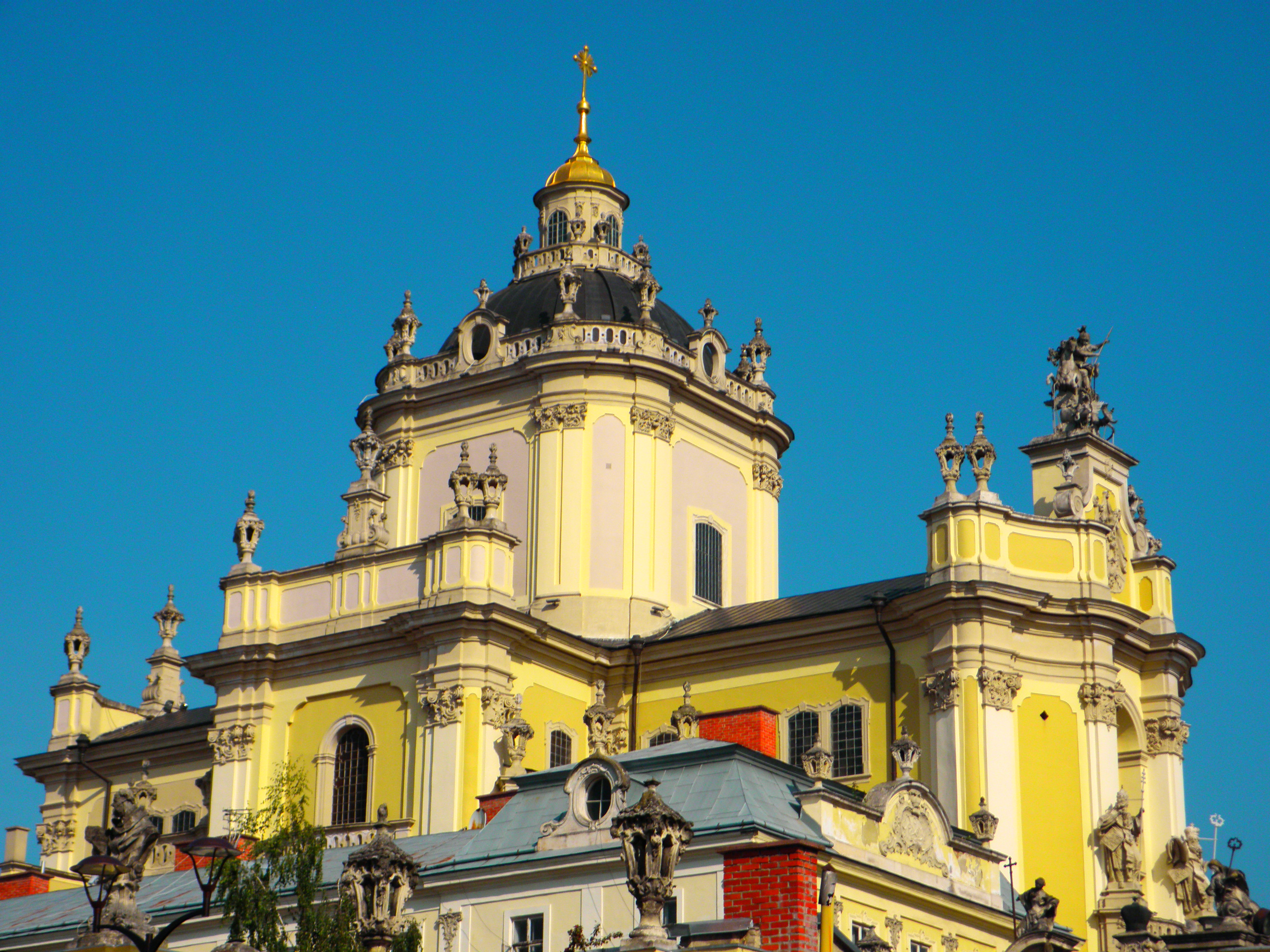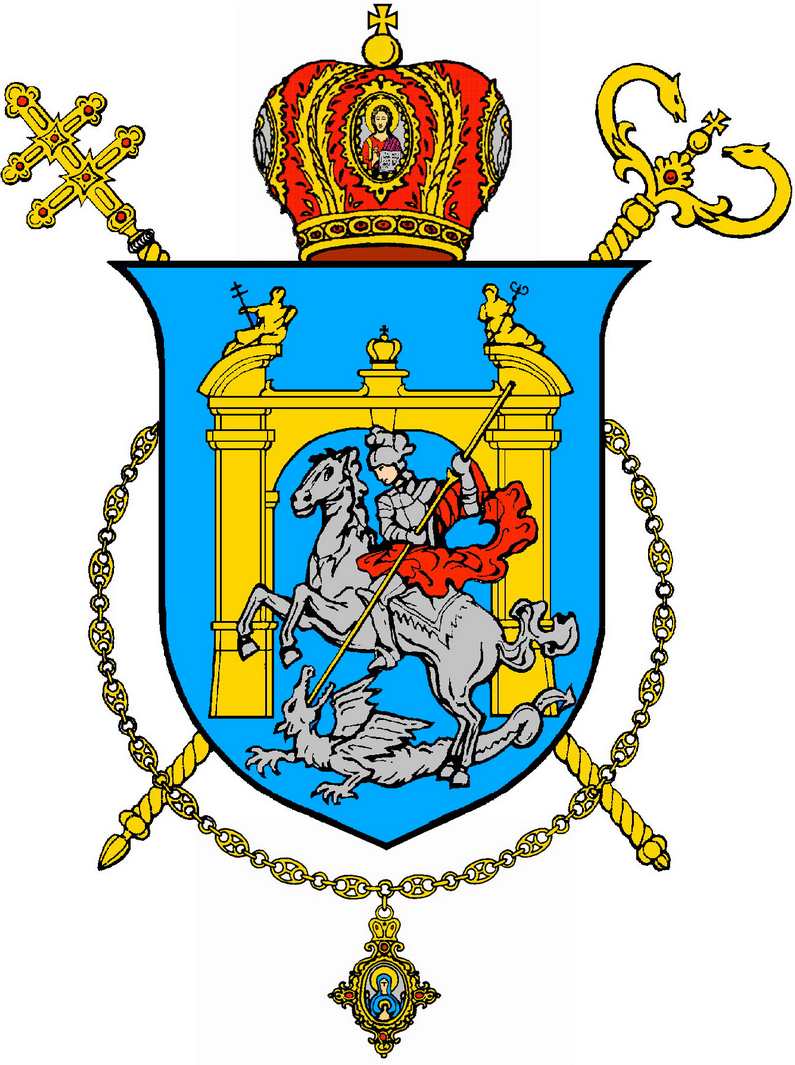|
Gregory Yakhimovich
Hryhoriy Yakhymovych ( uk, Григорій Яхимович, pl, Grzegorz Jachimowicz; 16 February 1792 – 29 April 1863) was the Metropolitan Archbishop of the Ukrainian Greek Catholic Church, and also a leading figure in the Ukrainian National Revival, from 1860 until his death in 1863. Life Hryhoriy Yakhymovych was born on 16 February 1792 in Podborce (today Pidbirtsi), a town in the region of Galicia, a part of the Polish–Lithuanian Commonwealth. He went to school in Lemberg (modern day Lviv in Ukraine), which had since been incorporated into the Austrian Empire, and was ordained on 14 September 1816. During 1818–1819, he served as a parish priest at a Greek Catholic church in Vienna, while he was studying at the Higher Scientific Institute for Diocesan Priests at St. Augustine's. He would go on to earn doctorates in theology, philosophy, and the liberals arts from the institute. He returned to Galicia in 1819, working as the head of the Department of Religion ... [...More Info...] [...Related Items...] OR: [Wikipedia] [Google] [Baidu] |
Ukrainian Greek Catholic Church
, native_name_lang = uk , caption_background = , image = StGeorgeCathedral Lviv.JPG , imagewidth = , type = Particular church (sui iuris) , alt = , caption = St. George's Cathedral in Lviv, mother church of Ukrainian Greek Catholic Church , abbreviation = UGCC , main_classification = Eastern Catholic , orientation = Eastern Christianity , theology = Catholic Theology , governance=Synod of the Ukrainian Catholic Church , polity = Episcopal , leader_title = Pope , leader_name = Francis , leader_title2 = Major Archbishop , leader_name2 = Sviatoslav Shevchuk , division_type = Parishes , division = 3993 , director = , fellowships = , associations = , area = Mainly: Ukraine Minority: Canada, the United States, Australia, France, the United Kingdom, Germany, Brazil, Poland, Lithuania and ... [...More Info...] [...Related Items...] OR: [Wikipedia] [Google] [Baidu] |
Higher Scientific Institute For Diocesan Priests At St
Higher may refer to: Music * The Higher, a 2002–2012 American pop rock band Albums * ''Higher'' (Ala Boratyn album) or the title song, 2007 * ''Higher'' (Ezio album) or the title song, 2000 * ''Higher'' (Harem Scarem album) or the title song, 2003 * ''Higher'' (The Horrors album), 2012 * ''Higher'' (Life On Planet 9 album) or the title song, 2017 * ''Higher'' (Michael Bublé album) or the title song, 2022 * ''Higher'' (The Overtones album) or the title song, 2012 * ''Higher'' (Regina Belle album) or the title song, 2012 * ''Higher'' (Roch Voisine album) or the title song, 2002 * ''Higher'' (Treponem Pal album), 1997 * ''Higher'', by Abundant Life Ministries, 2000 * ''Higher'', by ReinXeed, 2009 * ''Higher'', by Russell Robertson, 2008 * ''Higher!'', by Sly and the Family Stone, 2013 * ''Higher'', a mixtape by Remy Banks, 2015 Songs * "Higher" (Clean Bandit song), 2021 * "Higher" (Creed song), 1999 * "Higher" (Deborah Cox song), 2013 * "Higher" (DJ Khaled song), 20 ... [...More Info...] [...Related Items...] OR: [Wikipedia] [Google] [Baidu] |
Ukrainian Language
Ukrainian ( uk, украї́нська мо́ва, translit=ukrainska mova, label=native name, ) is an East Slavic language of the Indo-European language family. It is the native language of about 40 million people and the official state language of Ukraine in Eastern Europe. Written Ukrainian uses the Ukrainian alphabet, a variant of the Cyrillic script. The standard Ukrainian language is regulated by the National Academy of Sciences of Ukraine (NANU; particularly by its Institute for the Ukrainian Language), the Ukrainian language-information fund, and Potebnia Institute of Linguistics. Comparisons are often drawn to Russian, a prominent Slavic language, but there is more mutual intelligibility with Belarusian,Alexander M. Schenker. 1993. "Proto-Slavonic," ''The Slavonic Languages''. (Routledge). pp. 60–121. p. 60: " hedistinction between dialect and language being blurred, there can be no unanimity on this issue in all instances..."C.F. Voegelin and F.M. Voegelin. 19 ... [...More Info...] [...Related Items...] OR: [Wikipedia] [Google] [Baidu] |
Ruthenians
Ruthenian and Ruthene are exonyms of Latin origin, formerly used in Eastern and Central Europe as common ethnonyms for East Slavs, particularly during the late medieval and early modern periods. The Latin term Rutheni was used in medieval sources to describe all Eastern Slavs of the Grand Duchy of Lithuania, as an exonym for people of the former Kievan Rus', thus including ancestors of the modern Belarusians, Rusyns and Ukrainians. The use of ''Ruthenian'' and related exonyms continued through the early modern period, developing several distinctive meanings, both in terms of their regional scopes and additional religious connotations (such as affiliation with the Ruthenian Greek Catholic Church). In medieval sources, the Latin term ''Rutheni'' was commonly applied to East Slavs in general, thus encompassing all endonyms and their various forms (Ukrainian: ''русини'', Belarusian: ''русіны''). By opting for the use of exonymic terms, authors who wrote in Latin were ... [...More Info...] [...Related Items...] OR: [Wikipedia] [Google] [Baidu] |
Primate (bishop)
Primate () is a title or rank bestowed on some important archbishops in certain Christian churches. Depending on the particular tradition, it can denote either jurisdictional authority (title of authority) or (usually) ceremonial precedence (title of honour). Roman Catholic Church In the Western Church, a primate is an archbishop—or, rarely, a suffragan or exempt bishop—of a specific (mostly metropolitan) episcopal see (called a ''primatial see'') who has precedence over the bishoprics of one or more ecclesiastical provinces of a particular historical, political or cultural area. Historically, primates of particular sees were granted privileges including the authority to call and preside at national synods, jurisdiction to hear appeals from metropolitan tribunals, the right to crown the sovereign of the nation, and presiding at the investiture (installation) of archbishops in their sees. The office is generally found only in older Catholic countries, and is now ... [...More Info...] [...Related Items...] OR: [Wikipedia] [Google] [Baidu] |
Western Ukrainian Russophiles
Galician Russophilia ( uk, Галицьке русофільство) or Moscophiles ( uk, Москвофіли) were participants in a cultural and political movement largely in the Kingdom of Galicia and Lodomeria, Austria-Hungary (currently western Ukraine). This ideology emphasized that since the Eastern Slavic people of Galicia were descendants of the people of Kievan Rus' (Ruthenians), and followers of Eastern Christianity, they were thus a branch of the Russian people. The movement was part of the larger Pan-Slavism that was developing in the late 19th century. Russophilia was largely a backlash against Polonisation (in Galicia) and Magyarisation (in Carpathian Ruthenia) that was largely blamed on the landlords and associated with Roman Catholicism. Russophilia has survived longer among the Rusyn minority, especially that in Carpathian Ruthenia and the Lemkos of south-east Poland. Terminology The "Russophiles" did not always apply the term to themselves and called thems ... [...More Info...] [...Related Items...] OR: [Wikipedia] [Google] [Baidu] |
Western Ukrainian Clergy
The Eastern Catholic clergy of the Ukrainian Greek Catholic Church were a hereditary tight-knit social caste that dominated Ukrainian society in Western Ukraine from the late eighteenth until the mid-twentieth centuries, following the reforms instituted by Joseph II, Holy Roman Emperor, Joseph II, Emperor of Austria. Because, like their Eastern Orthodox Church, Eastern Orthodox brethren, Clerical marriage, married men in the Ukrainian Catholic Church could become priests (although they cannot become Bishops unless they are widowers), they were able to establish "priestly dynasties", often associated with specific regions, for many generations. Numbering approximately 2,000-2,500 by the 19th century, priestly families tended to marry within their group, constituting a Priestly caste, tight-knit hereditary caste.Orest Subtelny. (1988). ''Ukraine: A History.'' Toronto: University of Toronto Press, pp.214-219. In the absence of a significant culturally and politically active Western Ukr ... [...More Info...] [...Related Items...] OR: [Wikipedia] [Google] [Baidu] |
Revolutions Of 1848 In The Habsburg Areas
The Revolutions of 1848 in the Austrian Empire were a set of revolutions that took place in the Austrian Empire from March 1848 to November 1849. Much of the revolutionary activity had a nationalist character: the Empire, ruled from Vienna, included ethnic Germans, Hungarians, Slovenes, Poles, Czechs, Slovaks, Ruthenians (Ukrainians), Romanians, Croats, Venetians and Serbs; all of whom attempted in the course of the revolution to either achieve autonomy, independence, or even hegemony over other nationalities. The nationalist picture was further complicated by the simultaneous events in the German states, which moved toward greater German national unity. Besides these nationalists, liberal and even socialist currents resisted the Empire's longstanding conservatism. Preamble The events of 1848 were the product of mounting social and political tensions after the Congress of Vienna of 1815. During the "pre-March" period, the already conservative Austrian Empire moved further aw ... [...More Info...] [...Related Items...] OR: [Wikipedia] [Google] [Baidu] |
Pope Gregory VI
Pope Gregory VI ( la, Gregorius VI; died 1048), born Giovanni Graziano (John Gratian) in Rome ( la, Johannes Gratianus), was bishop of Rome and ruler of the Papal States from 1 May 1045 until his resignation at the Council of Sutri on 20 December 1046. Accession Gratian, the archpriest of St. John by the Latin Gate,Cowdrey, H. E. J., ''Pope Gregory VII, 1073-1085'', Clarendon Press, 1998, p. 29 was a man of great reputation for uprightness of character. He was also the godfather of |
Ukrainian Catholic Archeparchy Of Lviv
The Archeparchy of Lviv is a metropolitan archeparchy of the Ukrainian Greek Catholic Church. History Eparchy of Halych (1156 – 1406) The eparchy was established as the Orthodox Eparchy of Halych suffragan to Metropolitan of Kiev at some time during the mid 12th century, with its see originally located in Halych. In 1303 it was elevated to metropolitan status and held such status during several periods of the 14th century, until after 1401 the title of the vacated province was moved to the Metropolitan of Kyiv. Following the 14th century Galicia–Volhynia Wars, the diocese was secured after the Roman Catholic Archdiocese of Lviv. Eparchy of Lviv After long mediation in the mid 1539 the eparchy was re-established with its see moved to Lviv. The eparchy at first did not recognize the Union of Brest of 1596, which restored full communion with the Holy See, and joined it only in 1700. Following the Partitions of the Polish-Lithuanian Commonwealth at the end of 18th century whe ... [...More Info...] [...Related Items...] OR: [Wikipedia] [Google] [Baidu] |
Seminary
A seminary, school of theology, theological seminary, or divinity school is an educational institution for educating students (sometimes called ''seminarians'') in scripture, theology, generally to prepare them for ordination to serve as clergy, in academics, or mostly in Christian ministry. The English word is taken from the Latin ''seminarium'', translated as ''seed-bed'', an image taken from the Council of Trent document ''Cum adolescentium aetas'' which called for the first modern seminaries. In the United States, the term is currently used for graduate-level theological institutions, but historically it was used for high schools. History The establishment of seminaries in modern times resulted from Roman Catholic reforms of the Counter-Reformation after the Council of Trent. These Tridentine seminaries placed great emphasis on spiritual formation and personal discipline as well as the study, first of philosophy as a base, and, then, as the final crown, theology. The oldest C ... [...More Info...] [...Related Items...] OR: [Wikipedia] [Google] [Baidu] |



.jpg)
